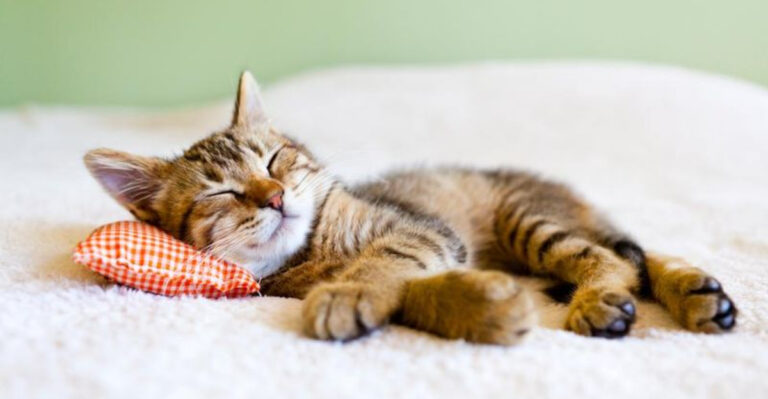15 Warning Cat Behaviors That Emerge In Unsecure And Unfriendly Homes

Cats are sensitive creatures that respond deeply to their environment. When a home doesn’t feel safe or welcoming, our feline friends develop behaviors that signal their distress.
Understanding these warning signs can help cat owners create a more nurturing space for their pets. These behaviors aren’t just annoying quirks – they’re your cat’s way of communicating that something in their world isn’t right.
1. Excessive Hiding
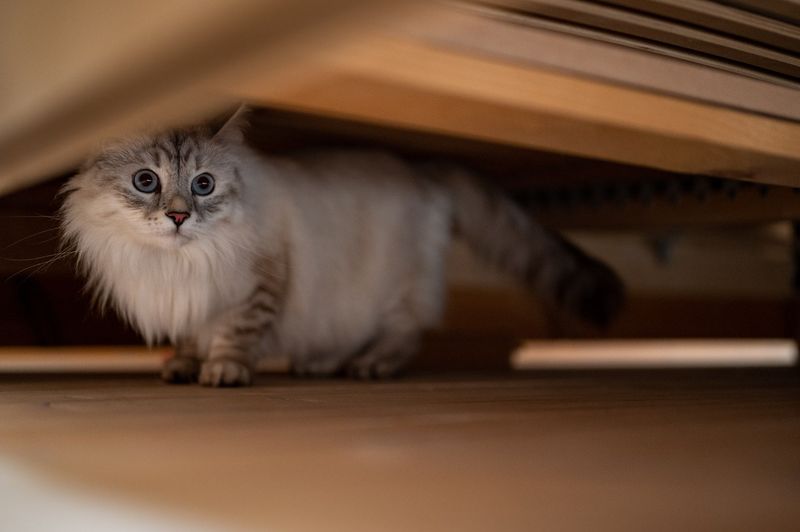
A cat that spends most of its time tucked away under beds or behind furniture is sending a clear distress signal. While all cats enjoy occasional alone time, constant hiding indicates they don’t feel safe in open areas of your home.
This behavior often develops when cats experience frequent loud noises, unpredictable movements, or threatening encounters. They’re essentially creating their own safe zone away from perceived dangers.
Coaxing these cats out won’t solve the problem. Instead, identify what’s making them feel unsafe and address those issues directly. Creating predictable routines and quiet spaces can help rebuild their confidence.
2. Increased Aggression Toward Humans

Sudden hissing, swatting, or biting when approached wasn’t always your cat’s response. This defensive aggression typically develops when cats feel chronically threatened or have experienced rough handling.
Cats resort to these behaviors when they believe flight isn’t an option and fighting is necessary for self-protection. The aggression might seem unprovoked, but it’s actually a response to accumulated negative experiences.
Watch for subtle warning signs like flattened ears, dilated pupils, and tail twitching that precede aggressive outbursts.
Rebuilding trust requires patience, gentle interactions, and respecting their boundaries until they feel secure again.
3. Inappropriate Urination
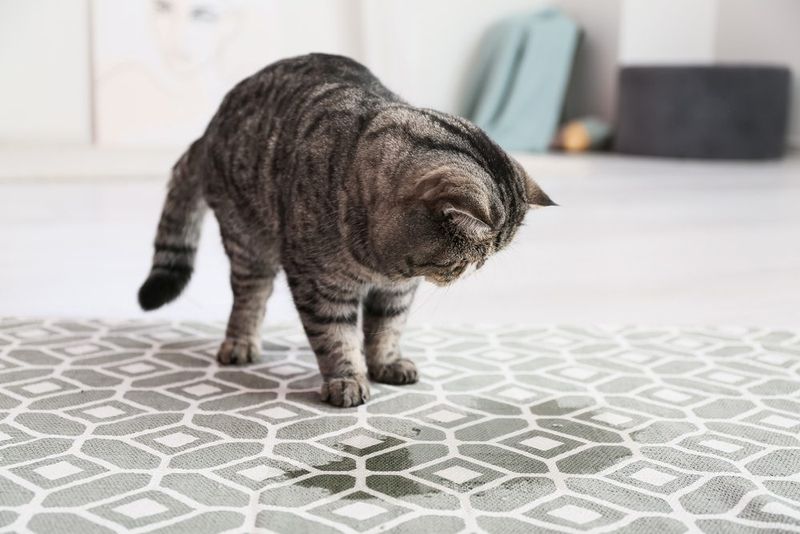
Finding urine outside the litter box isn’t just annoying – it’s a powerful message. Cats who feel insecure often mark territory or express anxiety through inappropriate elimination. This behavior frequently appears in homes with unpredictable environments or conflict.
Physical health issues should always be ruled out first. Once medical causes are eliminated, look at environmental factors. Is the litter box accessible and clean? Are there new pets or people causing stress?
Cats might also urinate on personal items like beds or clothing when feeling anxious. This isn’t spite – it’s an attempt to mix scents and create security in an otherwise threatening space.
4. Overgrooming To The Point Of Baldness
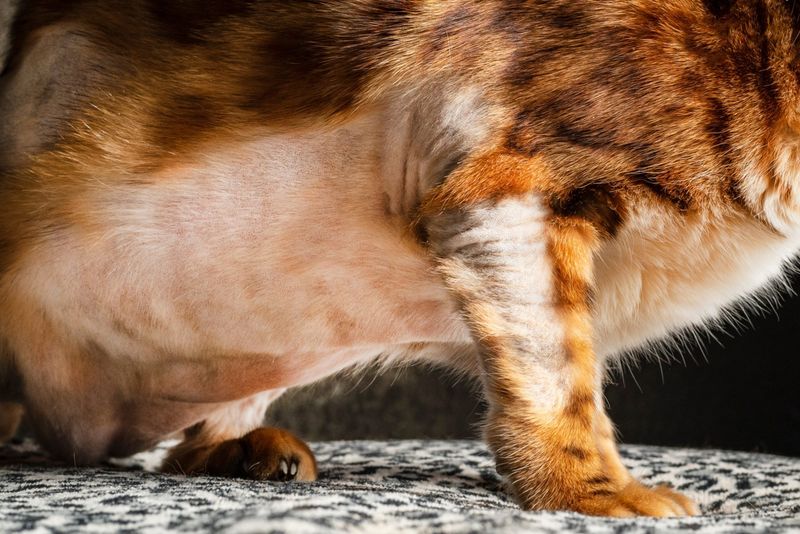
Spotting bald patches on your cat’s fur signals severe anxiety. Cats naturally groom for cleanliness, but excessive licking becomes a self-soothing mechanism in stressful environments. The repetitive action releases endorphins that temporarily calm them down.
This behavior creates a destructive cycle – stress triggers grooming, which provides brief relief, then returns when the grooming stops. Common target areas include the belly, inner thighs, and front legs.
Cats in chaotic households with unpredictable routines, frequent arguments, or rough handling are particularly susceptible.
Creating a calm, structured environment with safe retreat spaces can help break this harmful pattern before skin infections develop.
5. Reduced Appetite And Weight Loss
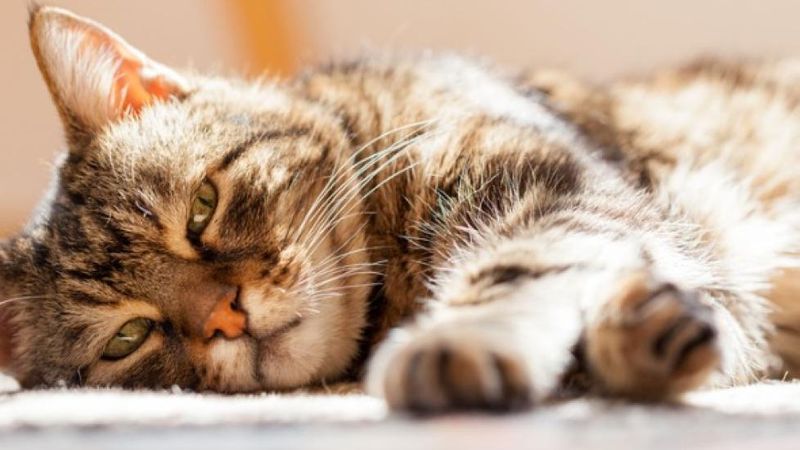
A cat that stops eating regularly is showing one of the most serious signs of distress. Healthy cats have consistent appetites, so sudden disinterest in food indicates something is deeply wrong with their environment.
Stress triggers physiological changes that suppress hunger. When cats feel constantly on edge, their bodies remain in a heightened state of alertness, shutting down non-essential functions like digestion.
This behavior is particularly common in homes with loud arguments, unpredictable handling, or where the cat feels trapped without escape routes.
If your previously food-motivated cat becomes disinterested in meals, consider both medical issues and environmental stressors that might be affecting their sense of security.
6. Excessive Vocalization
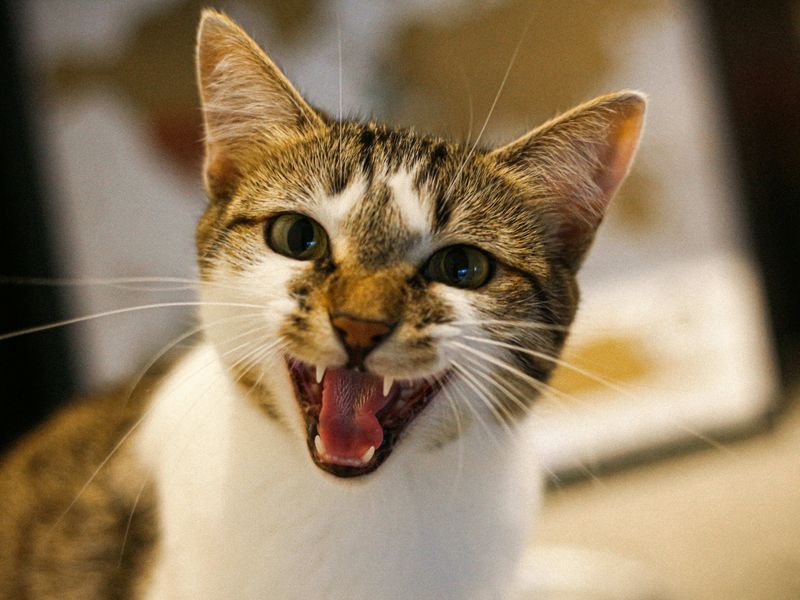
Unusual increases in meowing, yowling, or crying often indicate a cat in distress. While some breeds are naturally talkative, a sudden change in vocalization patterns should raise concerns about their sense of security.
Cats may become vocal when their needs aren’t being met – whether that’s attention, food, or safety. The persistent crying is their attempt to communicate that something in their environment feels threatening or uncomfortable.
This behavior commonly appears in homes where cats are frequently left alone for long periods or where there’s inconsistent care.
Rather than punishing the noise, investigate what your cat might be trying to tell you about their living conditions.
7. Destructive Scratching
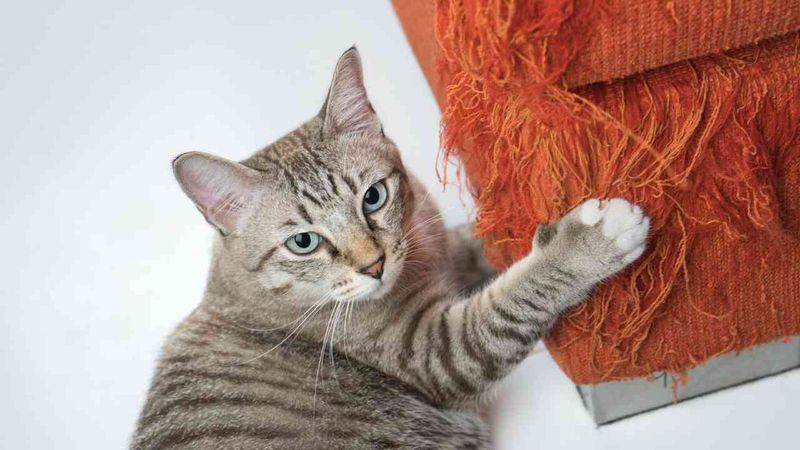
Finding your furniture shredded goes beyond normal scratching behavior. While all cats need to scratch, excessive destruction often signals anxiety and territory insecurity in unstable homes.
Scratching serves multiple purposes – it maintains claw health, stretches muscles, and marks territory with scent glands in their paws. When cats feel their territory is threatened, this natural behavior intensifies dramatically.
Households with frequent visitors, new family members, or other pets often see this behavior emerge.
Rather than punishment, provide appropriate scratching surfaces and address the underlying insecurity. Creating stable routines and designated safe spaces can significantly reduce destructive scratching.
8. Flinching When Approached

A cat that startles easily or cowers when you reach toward them is showing signs of past negative experiences. This flinching behavior develops when cats associate human movement with unpredictable or painful outcomes.
Their nervous system remains on high alert, ready to react to perceived threats. Even gentle movements might trigger their fight-or-flight response if they’ve experienced rough handling or punishment.
Building trust with these cats requires extremely slow movements, respect for personal space, and positive associations.
Avoid looming over them or making sudden gestures. Instead, let them approach you on their terms, using treats and calm voices to create new, positive associations with human interaction.
9. Constant Vigilance And Inability To Relax
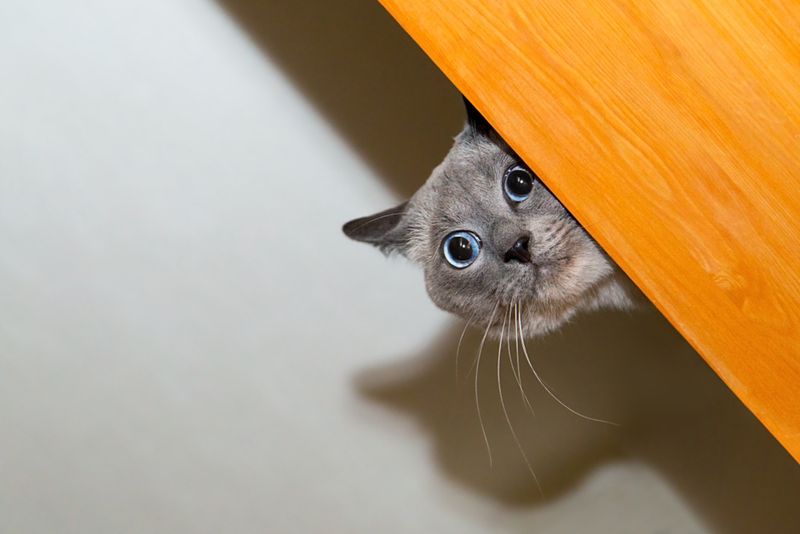
A cat that seems perpetually on edge – wide eyes, tense body, twitching at every sound – isn’t experiencing normal alertness. This hypervigilance develops in environments where cats have learned they must always be ready for threats.
Healthy cats alternate between playfulness, curiosity, and deep relaxation. When you rarely see your cat sleeping deeply or lounging comfortably, it suggests they don’t feel safe enough to lower their guard.
This behavior commonly appears in homes with unpredictable loud noises, chaotic activity, or where the cat has experienced frightening events.
Creating quiet zones and consistent daily routines helps these cats learn that it’s finally safe to relax.
10. Obsessive Pacing
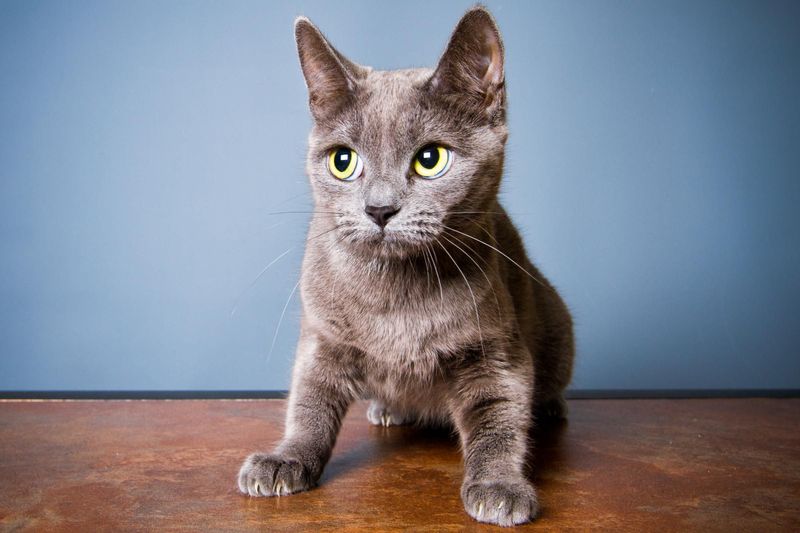
Repetitive walking back and forth along the same path isn’t normal cat behavior. This compulsive pacing emerges when cats feel trapped, understimulated, or anxious in their environment.
The repetitive movement releases stress-reducing chemicals in their brains, creating a temporary relief that reinforces the behavior. You might notice it’s worse during specific triggers like loud noises or when certain people are present.
Cats in confined spaces without enrichment are particularly prone to developing this coping mechanism.
Providing vertical spaces, interactive toys, and addressing underlying stressors can help break the cycle. Regular play sessions that mimic hunting behaviors also give healthy outlets for their energy and anxiety.
11. Self-Isolation From Family

A once-social cat that now avoids family interaction is displaying a concerning behavioral shift. This withdrawal often develops gradually as cats learn that human contact in their home brings unpredictable or negative experiences.
Cats naturally seek positive social connections when they feel secure. When they deliberately avoid people they once enjoyed, it suggests their trust has been damaged through rough handling, loud environments, or being chased/cornered.
This behavior differs from normal independence – these cats actively monitor human locations to maintain distance.
Rebuilding relationships requires respecting their boundaries while creating positive associations through treats, play, and gentle voices without forcing interaction.
12. Compulsive Wool-Sucking Or Pica
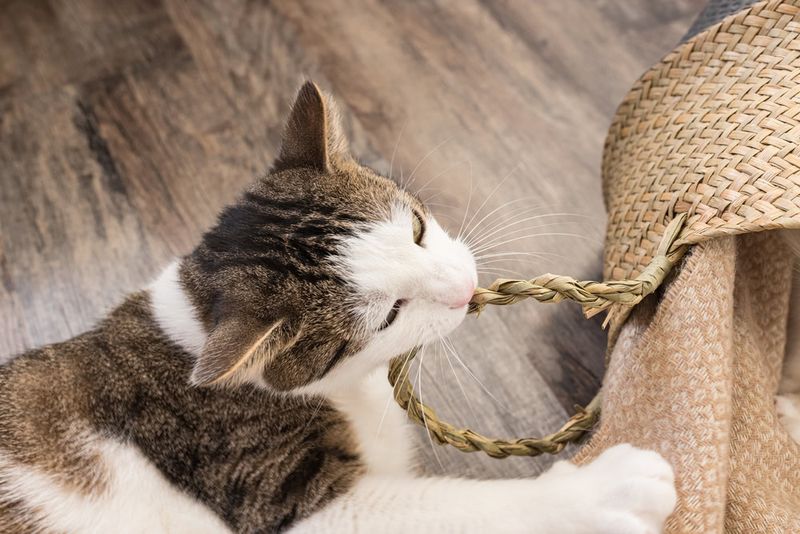
Finding your cat nursing on blankets or eating non-food items signals significant distress. This behavior often begins in kittenhood when cats are separated from mothers too early, but worsens in stressful environments.
The rhythmic sucking motion releases calming endorphins, similar to how nursing comforted them as kittens. In unstable homes, this self-soothing mechanism intensifies as cats seek comfort.
Beyond fabric-sucking, some cats progress to consuming inedible objects like plastic, paper, or plants – a dangerous condition called pica.
This behavior requires veterinary attention while also addressing environmental stressors. Creating predictable routines and safe spaces helps reduce the anxiety driving these oral fixations.
13. Excessive Startling At Normal Sounds

A cat that jumps dramatically at ordinary household noises is displaying hyperacusis – an exaggerated startle response. This heightened sensitivity develops when cats live in unpredictable environments where loud noises or sudden movements have been frightening.
Their nervous system becomes programmed to overreact to potential threats. Even small sounds like a closing cabinet or rustling paper can trigger an extreme fear response.
This behavior is particularly common in homes with frequent arguments, unpredictable loud noises, or where cats have been deliberately scared as a form of “play.”
Creating a quiet environment with consistent background sounds like soft music can help desensitize these cats and rebuild their sense of security.
14. Redirected Aggression Toward Other Pets
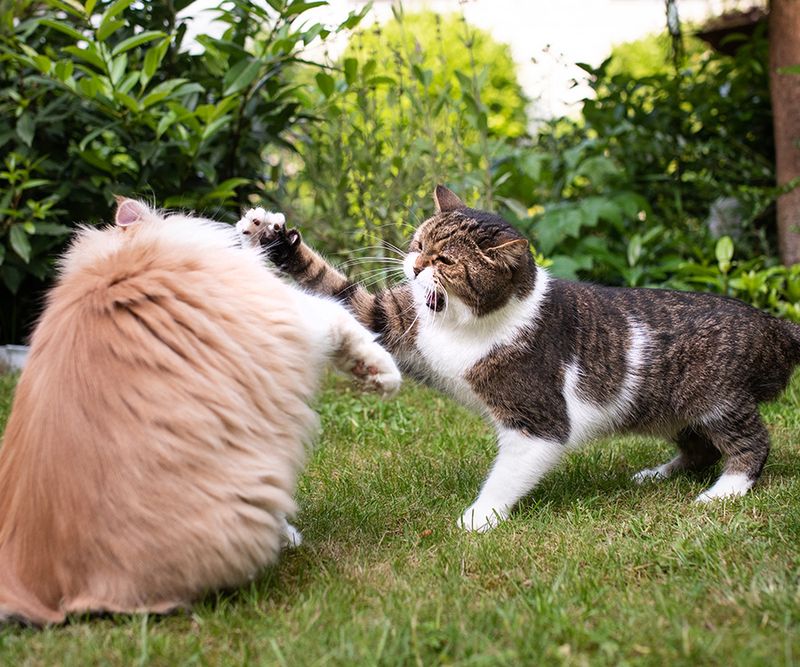
Sudden attacks on fellow pet housemates often indicate a cat feeling threatened by something else entirely. This redirected aggression occurs when a cat becomes aroused by a trigger they can’t address directly – like outdoor cats or neighborhood noises.
Unable to confront the actual threat, they redirect their aggression toward available targets, often other household pets or even owners.
What makes this behavior particularly troubling is that it can persist long after the initial trigger is gone. Homes with multiple windows facing busy areas or with unpredictable entry of strangers frequently see this behavior.
Creating visual barriers to outdoor stimuli and providing separate safe spaces for each pet helps reduce these stress-induced attacks.
15. Night-Time Hyperactivity

Extreme restlessness and destructive behavior specifically during nighttime hours often signals a stressed cat seeking attention or release. While cats are naturally crepuscular (active at dawn and dusk), excessive nighttime activity suggests environmental problems.
Cats confined indoors all day without adequate stimulation or those experiencing anxiety may save their energy for frantic nighttime sessions.
This behavior frequently appears in homes where cats are ignored during the day or where their environment lacks enrichment. The midnight zoomies become an outlet for pent-up energy and stress.
Establishing interactive play sessions before bedtime and creating stimulating daytime activities helps redirect this energy to appropriate times and behaviors.





